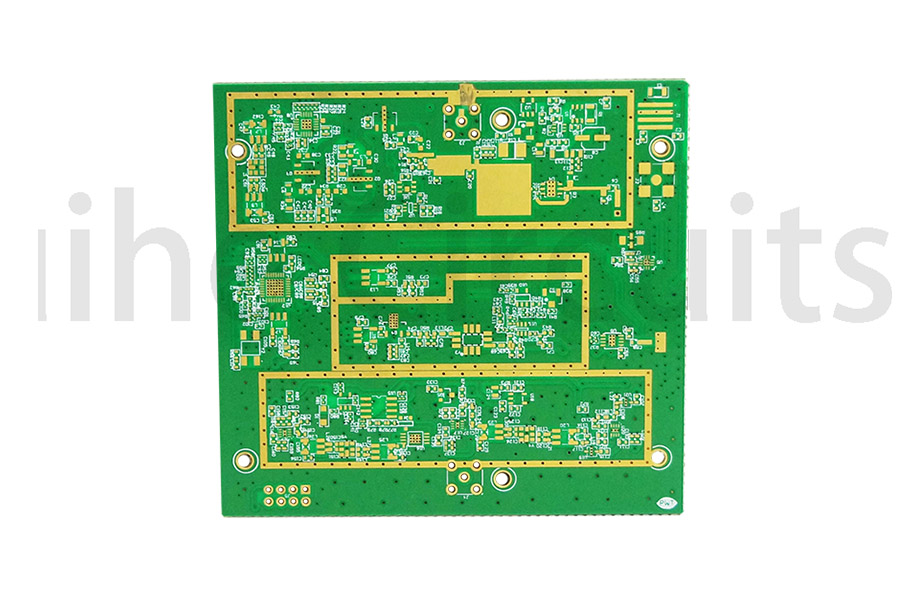What are the Rogers PCB board series classification?
The Rogers RO4350B material allows RF PCB engineers to easily design circuits, such as network matching and impedance control of transmission lines. Due to its low dielectric loss characteristics, RO4350B material has an unmatched advantage over ordinary circuit materials in high-frequency applications. The variation of permittivity with temperature is almost the lowest among similar materials, and its permittivity is also quite stable in a wide frequency range, with a design recommendation of 3.66. LoPra™ Copper foil reduces insertion loss. This makes the material suitable for broadband applications.
Rogers PCB board: material ceramic high frequency PCB series classification:
RO3000 series: PTFE circuit material based on ceramic filling, models are: RO3003, RO3006, RO3010, RO3035 high-frequency laminate.
RT6000 series: based on ceramic filled PTFE circuit material, designed for electronic circuits and microwave circuits requiring high permittivity. Models are: RT6006 permittivity 6.15, RT6010 permittivity 10.2.
TMM series: composite materials based on ceramic, hydrocarbon, thermosetting polymer, model: TMM3, TMM4, TMM6, TMM10, TMM10i, TMM13i. , etc.
The RO4003 material can be removed with a conventional nylon brush. No special handling is required before electroplating copper without electricity. The plate must be treated using a conventional epoxy/glass process. In general, it is not necessary to remove the borehole because the high TG resin system (280°C + [536°F]) does not discolor easily during the drilling process. If the stain is caused by an aggressive drilling operation, the resin can be removed using a standard CF4/ O2 plasma cycle or by a dual alkaline permanganate process.
The cooking requirements of the RO4000 material are comparable to those of epoxy/glass. In general, devices that do not cook epoxy/glass plates do not need to cook RO4003 PCBs. For epoxy/baked glass installation as part of a regular process, we recommend cooking at 300°F, 250°F (121°C-149°C) for 1 to 2 hours. RO4003 does not contain flame retardants. Understandably, plates encapsulated in infrared (IR) units or operating at very low transmission speeds can reach temperatures in excess of 700°F (371 °C); RO4003 can start burning at these high temperatures. Systems that still use infrared reflux devices or other equipment that can reach these high temperatures should take the necessary precautions to ensure that there is no risk.
Ro3003 is a Rogers PCB board material ceramic filled PTFE composite for commercial microwave and RF applications. This range of products is designed to provide superior electrical and mechanical stability at a competitive price. Rogers Ro3003 has excellent permittivity stability over the entire temperature range, including the elimination of permittivity changes that occur when PTFE glass materials are used at room temperature. In addition, Ro3003 laminates have loss coefficients as low as 0.0013 to 10 GHz.
Post time: Aug-24-2022





